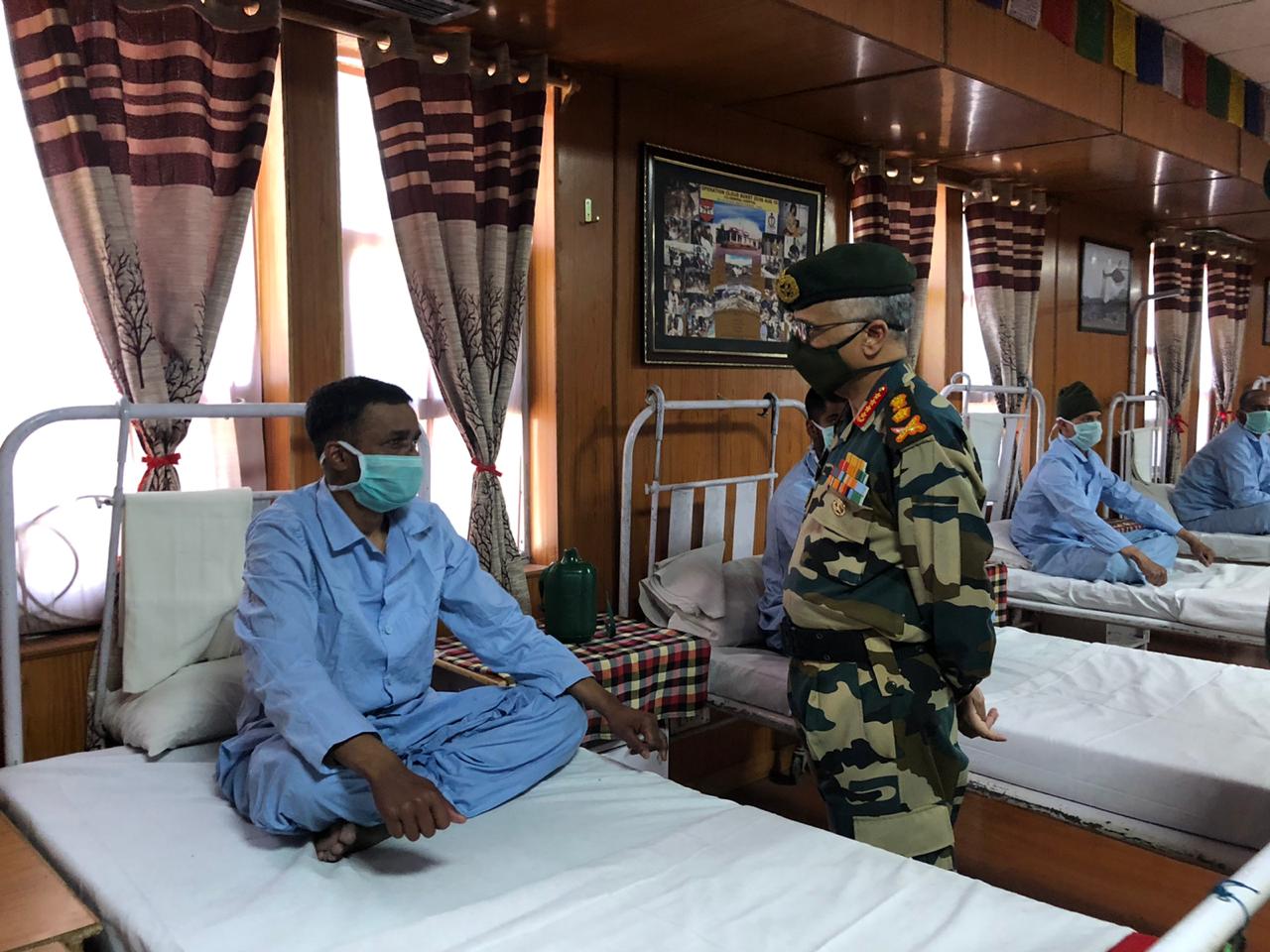
New Delhi- Army Chief Gen MM Naravane on Tuesday reviewed India’s military preparedness in eastern Ladakh as he began a two-day visit to the region where a border clash last week left 20 Indian soldiers dead in the midst of a tense standoff with the Chinese People’s Liberation Army.
Soon after arriving in Leh, Gen Naravane visited an Army hospital where 18 soldiers injured in the clash in Galwan Valley on June 15 are undergoing treatment, Army officials said.
The Chief of the Army Staff interacted with almost all the injured soldiers and complimented them for their bravery, they added.
A surveillance post set up by the Chinese Army on a narrow mountain trail in violation of an agreement was the trigger for the clash in Galwan Valley in which 20 Indian soldiers were killed.
After visiting the hospital, Gen Naravane reviewed the overall security situation in the region with the ground commanders, and is learnt to have directed them to keep a high-level of alertness to deal with any Chinese misadventure, people familiar with the issue said.
The Chief of the Army Staff is scheduled to visit a number of forward areas during his two-day visit to the region.
Last week, Air Chief Marshal RKS Bhadauria made a quiet visit to Ladakh and Srinagar air bases to review the Indian Air Force’s preparedness to deal with any eventualities in the region.
Before leaving for Leh, Gen Naravane attended the final session of a two-day conference of top Army commanders. The commanders extensively deliberated on the situation in eastern Ladakh.
In Leh, Gen Naravane was also scheduled to hold an extensive meeting with Lt Gen Harinder Singh, the commander of the 14 Corps that takes care of the sensitive border with China.
On Monday, Lt Gen Singh held a nearly 11-hour meeting with Commander of the Tibet Military District Maj Gen Liu Lin. In the meeting, the two sides arrived at a mutual consensus to “disengage” from all the friction points in eastern Ladakh.
The first round of the Lt Gen talks were held on June 6 during which both sides finalised an agreement to disengage gradually from all the standoff points beginning with Galwan Valley.
However, the situation along the border deteriorated following the Galwan Valley clashes on June 15 as the two sides significantly bolstered their deployments in most areas along the 3,500-km de-facto border.
On Sunday, the government gave the armed forces “full freedom” to give a “befitting” response to any Chinese misadventure along the LAC.
The Army has already sent thousands of additional troops to forward locations along the border in the last one week. The IAF has also moved a sizeable number of its frontline Sukhoi 30 MKI, Jaguar, Mirage 2000 aircraft and Apache attack helicopters to several key air bases including Leh and Srinagar following the clashes.
The situation in eastern Ladakh deteriorated after around 250 Chinese and Indian soldiers were engaged in a violent face-off on May 5 and 6. The incident in Pangong Tso was followed by a similar incident in north Sikkim on May 9.
Prior to the clashes, both sides had been asserting that pending the final resolution of the boundary issue, it was necessary to maintain peace and tranquillity in the border areas.
Follow this link to join our WhatsApp group: Join Now
Be Part of Quality Journalism |
Quality journalism takes a lot of time, money and hard work to produce and despite all the hardships we still do it. Our reporters and editors are working overtime in Kashmir and beyond to cover what you care about, break big stories, and expose injustices that can change lives. Today more people are reading Kashmir Observer than ever, but only a handful are paying while advertising revenues are falling fast. |
| ACT NOW |
| MONTHLY | Rs 100 | |
| YEARLY | Rs 1000 | |
| LIFETIME | Rs 10000 | |













